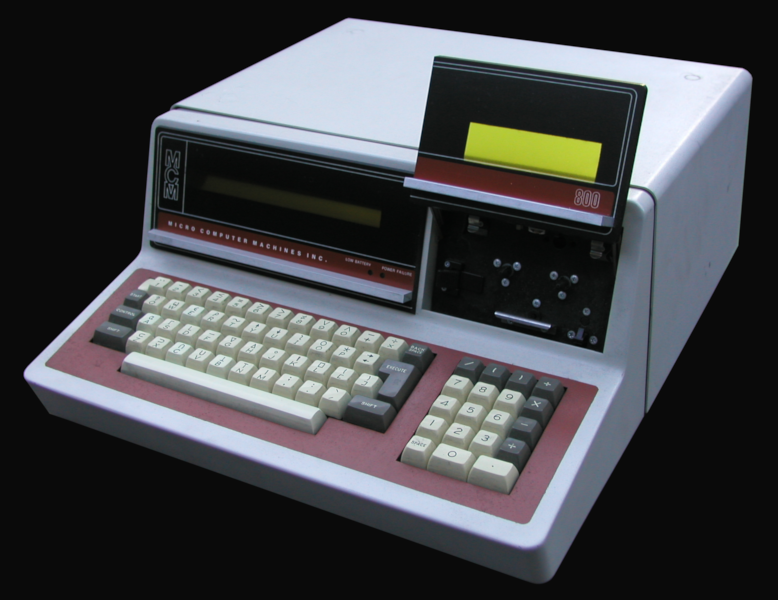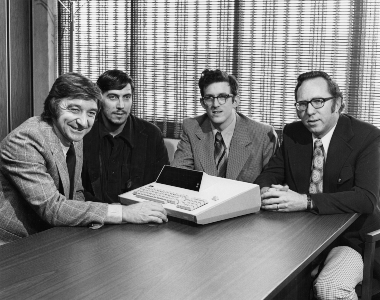

Already in early 1974, MCM was researching possible directions for the development of new generation computers to replace the MCM/70 and maintain a safe technological distance from competition. MCM announced its general purpose computer System 800 in July 1976. The system consisted of the MCM/800 desktop computer, a printer, a display monitor, and a floppy disk drive system. The MCM/800 computer could be operated in a stand-alone or distributed process mode. It could communicate with other computers and terminals, it could be interfaced with most standard peripheral devices. The MCM System 800 was advertised as
a complete, stand-alone computer system providing all the capacities of a large shared computer system with none of the inconveniences and at a fraction of the expense... Despite its small size, MCM/800 can perform almost any operation and execute any task that a large-scale computer can. Within its compact chassis are all the features and capabilities of a total data processing system.
The MCM/800 computer was designed by José Laraya. Although it inherited a single-line plasma display and a cassette drive from the MCM/70, it was designed primarily to operate with a display monitor (the VDU 9620) and a floppy disk drive system, such as the MCM SDS 250 and DDS 500 systems. The computer was ten times faster than the MCM/70 but back compatible with its predecessor thanks to careful upgrading of the MCM/APL interpreter and EASY/AVS operating system employed in both computers.
By 1976, MCM had a better grasp of the end-users' needs. The idea of MCM computers facilitating software engineering experience, which had prevailed at the company's start up, turned out to be far from universally appealing. There were those who, given a choice, would prefer to acquire professional-grade software instead of tools for their in-house development. In the end, the company offered commercial-grade applications software in various categories including word processors (e.g. the Text 800) as well as accounting and system administration software (e.g. Pension Valuation and Employee Administrative System, and MCM Client Accounting System software).
The company sold several MCM/800 computers to well-known firms and organizations, including the Canadian Department of National Defence (war-game simulations), Canadian General Insurance (actuarial), Crown Life Insurance (actuarial/underwriting), Ontario Hydro (scientific use), University of Toronto (educational use), Merrill Lynch Royal Securities Ltd. (research), John Hancock Mutual Life Insurance (actuarial), Governments of Ontario and North West Territories, and NASA.
Shown in the exhibit: an MCM/800, a VDU 9620 display monitor, and a SDS 250 single drive diskette system.
Background image: The September 25th, 1973 announcement of the MCM/70 in Toronto's Royal York Hotel.
From left: Mers Kutt, Gordon Ramer, Edward (Ted) Edwards, and Reg Rea, with a prototype
of the MCM/70.
Photograph by Parkway Productions; courtesy of York University Computer Museum.
